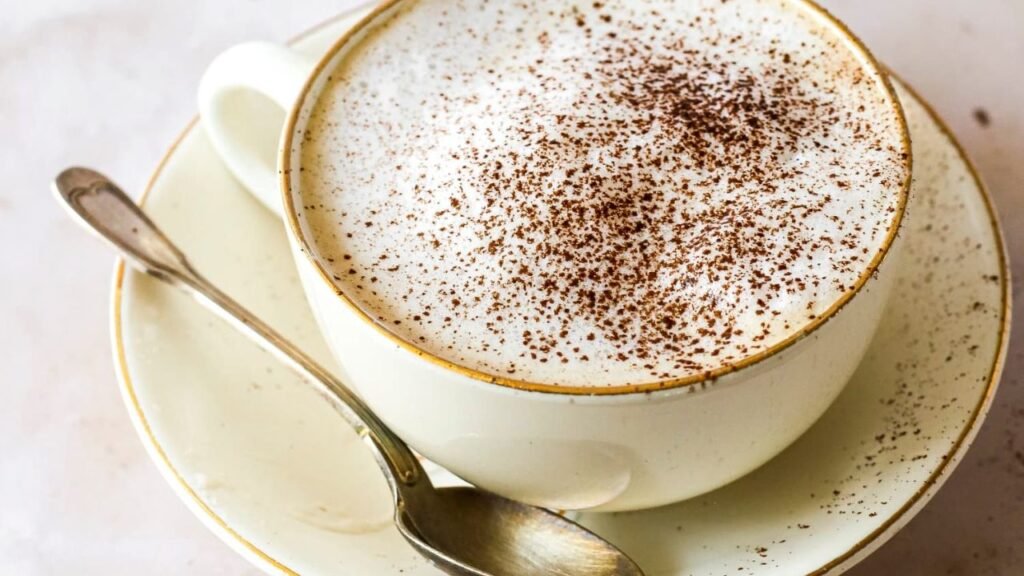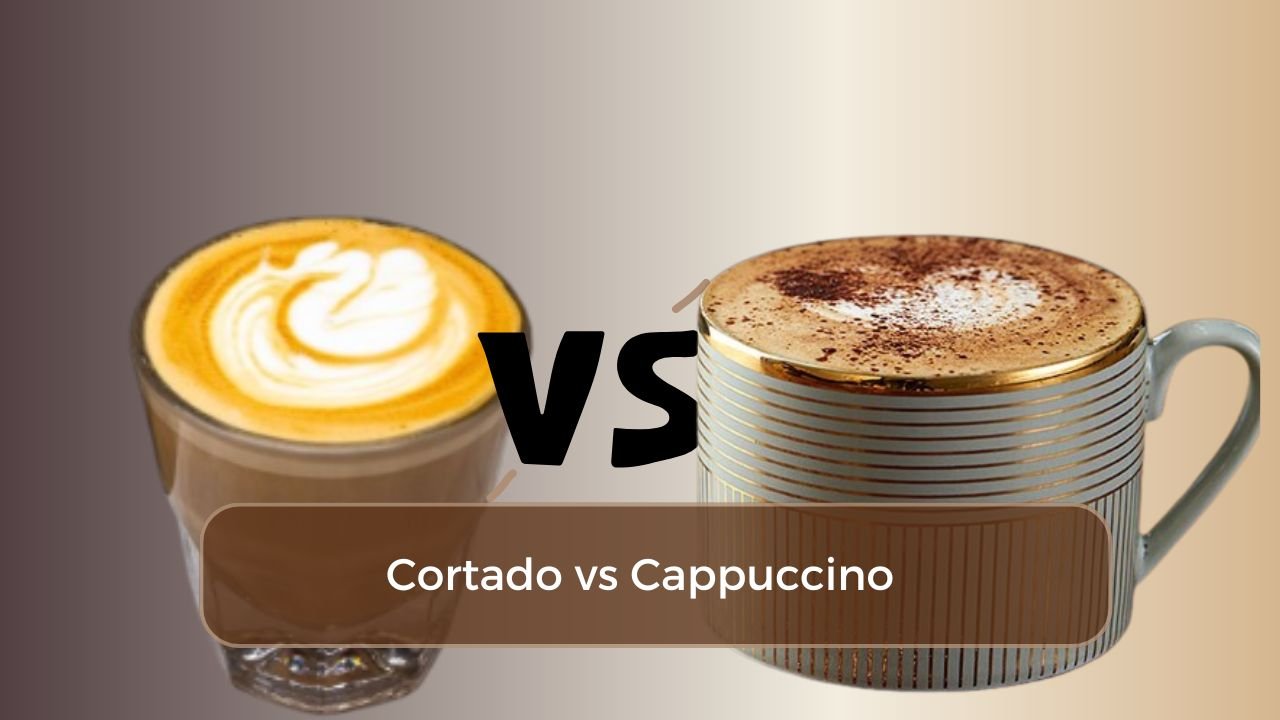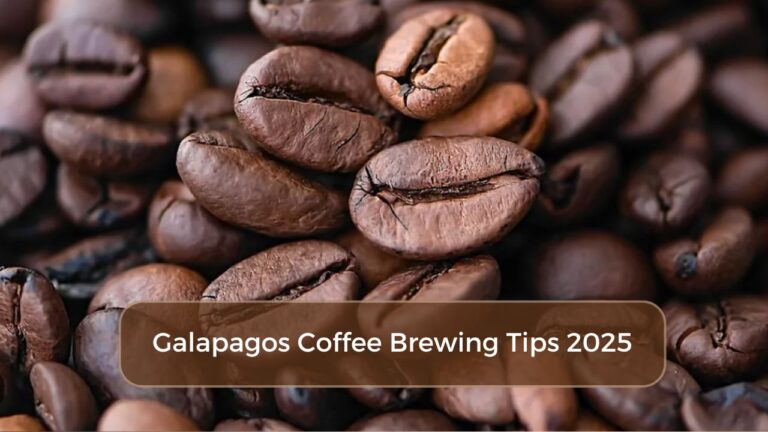Cortado vs Cappuccino: The Battle of Espresso Drinks 2025
Have you experienced the dilemma which would drive you towards a cortado or cappuccino when visiting your preferred café? The espresso drinks cortado and cappuccino have similar characteristics yet present unique experience differences which alter how you drink coffee.
This article breaks down the competitive relationship of cortado vs cappuccino while explaining the importance of differentiating between them. You will gain all the knowledge about cortado coffee vs cappuccino needed to select your ideal beverage based on personal taste preferences.
What’s the Difference Between Cortado and Cappuccino?
Both cappuccinos and cortados exist as well-known coffee drinks that many people mistakenly mistake for the other. The key distinction rests in their relative amounts of espresso compared to milk.

Decompounded espresso drink combines one ounce of espresso with an equal amount of steamed milk for a 1:1 pour ratio according to traditional preparation methods. Cappuccino preparation requires espresso topped with steamed milk along with frothed milk on top where they use proportions that equal 1:3:3 espresso to steamed milk to frothed milk.
Comparison Table: Cortado vs Cappuccino
| Feature | Cortado | Cappuccino |
|---|---|---|
| Origin | Spain | Italy |
| Coffee-to-Milk Ratio | 1:1 | 1:2 (1:1:1 for espresso, steamed milk, and foam) |
| Texture | Smooth and velvety | Frothy and airy |
| Caffeine Content | Medium to High | Medium |
| Serving Size | 4 oz | 6 oz |
| Glassware | Small glass | Ceramic cup |
| Taste | Strong espresso flavor with slight milk smoothness | Balanced espresso flavor with creamy milk |
| Best for | Those who prefer a strong coffee taste | Those who enjoy a creamy, foamy texture |
History and Cultural Significance of Cortado and Cappuccino
Discover the rich history and cultural significance of these espresso classics below.
The History of Cortado
The drink obtained its name from Spanish language where cortado means cut. The milk functions to reduce espresso acidity. Spain introduced the cortado to the world which later became beloved throughout Latin America before people from across the globe adopted it. For individuals who want a stronger espresso flavor combined with milk they choose cortado as their go-to drink.

The History of Cappuccino
It has its roots in Italy and is named after the Capuchin monks because of the drink’s brownish color resembling their robes. It became a European staple in the early 20th century and later gained popularity in the U.S. with the rise of specialty coffee culture. The cappuccino is known for its rich, creamy texture and is often enjoyed in the morning.

Taste, Preparation, and Variations
Learn about their taste, brewing methods, and unique variations below.
Taste Profile
- The cortado presents strong espresso taste that gets mellowed by a minimal milk addition.
- The combination of espresso and steamed milk with foam texture produces the balanced drink known as cappuccino.
Preparation Methods
Explore the different preparation methods used for each below.
How to Make a Cortado
- Brew a double shot of espresso (2 oz).
- Steam milk to a silky texture (2 oz).
- Pour milk into the espresso in a small glass.
How to Make a Cappuccino
- Brew a single or double shot of espresso (2 oz).
- Steam 4 oz of milk to create microfoam.
- Pour the milk over the espresso, ensuring foam sits on top.
Popular Variations
- Cortado Variations: Gibraltar (served in a specific glass), Leche y Leche (with condensed milk).
- Cappuccino Variations: Dry Cappuccino (more foam, less milk), Wet Cappuccino (more milk, less foam).
Which Coffee is Better for You?
- Choose a cortado for a Stronger Coffee Taste .
- Go for a cappuccino for a Creamier, Foamier Experience.
- A cortado provides a quick caffeine boost since it serves as a smaller option.
- The creamy cappuccino offers an ideal choice to enjoy at leisure.
Cortado versus Cappuccino Popularity in Different Regions
- Cortado: More popular in Spain, Portugal, and Latin America.
- Cappuccino: A staple in Italy and widely loved in the U.S., Australia, and European coffee shops.
Cortado and Cappuccino Caffeine Content Comparison
The caffeine amount present in them varies because of different espresso volume usage. The cortado contains an equal or double amount of espresso to milk which gives it the strong caffeinated content. The cappuccino preparation with a 1:1:1 ratio results in more milk and foam layers so it produces lower caffeine concentration than other forms.

Drinking one espresso shot delivers 60–75 milligrams of caffeine to the body. The caffeine amount in a cortado with double espresso exceeds 120-150 mg and a cappuccino with a single espresso dose contains 60-75 mg of caffeine.
Nutritional Differences of Cortado and Cappuccino
Cortado contains less milk than a cappuccino so it has fewer calories and less fat. A traditional cortado with whole milk has around 30-50 calories, while a cappuccino, with more steamed milk and foam, can have 80-120 calories per serving.
The type of milk used can affect the nutritional content. Choosing skim, oat, or almond milk can lower the calorie count and change the texture of both drinks.
Best Occasions to Drink Cortado and Cappuccino
Cortado appearing as the best option for people who desire intense coffee flavors yet dislike milk dilution in their beverages. It serves as the perfect choice for those needing quick caffeine boost but avoid diluted taste.
Cappuccino is perfect for a more indulgent and creamy experience. Drinking it works well during both morning and midday but provides a smooth frothy taste.
Cappuccino and Cortado Pairing with Food
When it comes to cortado vs cappuccino vs latte, the main difference lies in the ratio of espresso to milk, with each drink offering a unique flavor profile and texture. The flavors of them match perfectly with diverse edibles which improves the coffee enjoyment experience.
Best Foods to Pair with Cortado
When enjoyed together a cortado’s espresso-dominated taste accords best with mild sweet and buttery types of pastries. Some great options include:
- The buttery croissant brings out the smoothness of cortado through its layered texture.
- Almond Biscotti offers its nutty body to boost the richness of coffee drinks.
- Black chocolate aligns well with espresso taste because of its bitter potency.
- The bold flavor notes of the cortado pair nicely with cheese combined with crackers due to the savory contrast.
Best Food to Pair with Cappuccino
The combination of creamy froth and balanced taste of cappuccinos makes them suitable for pairings with sweeter light foods. Some great pairings include:
- A blueberry or banana muffin creates an enjoyable taste experience with the milk foam.
- The moderate coffee taste blends harmoniously with the sweet Danish pastries.
- The traditional coffee-flavored Tiramisu serves as an excellent dessert option with cappuccinos.
- The subtle texture of butter cookies smooths perfectly with the froth and moistness of cappuccino.
Conclusion
The choice between cortado vs cappuccino depends on the strength of coffee taste along with the desired texture you want from your beverage. Customers who like robust espresso flavors without excessive milk should try cortado since it offers intense tasting espresso.
Between these two drinks the cappuccino stands out by its smooth frothy texture which matches the perfect drink profile for individuals who want smoother and lighter coffee. The two beverages supply satisfying caffeine effects and complement various kinds of food.
FAQs
Is a Cortado Stronger Than a Cappuccino?
A cortado delivers stronger coffee flavor since it contains a lower milk content than a cappuccino does.
Which Drink has More Foam?
A cappuccino has more foam, while a cortado has little to no foam.
Can I Make a Cortado with Alternative Milk?
Yes! Oat and almond milk along with soy milk work as substitutes. They may present a different texture than regular dairy milk.







